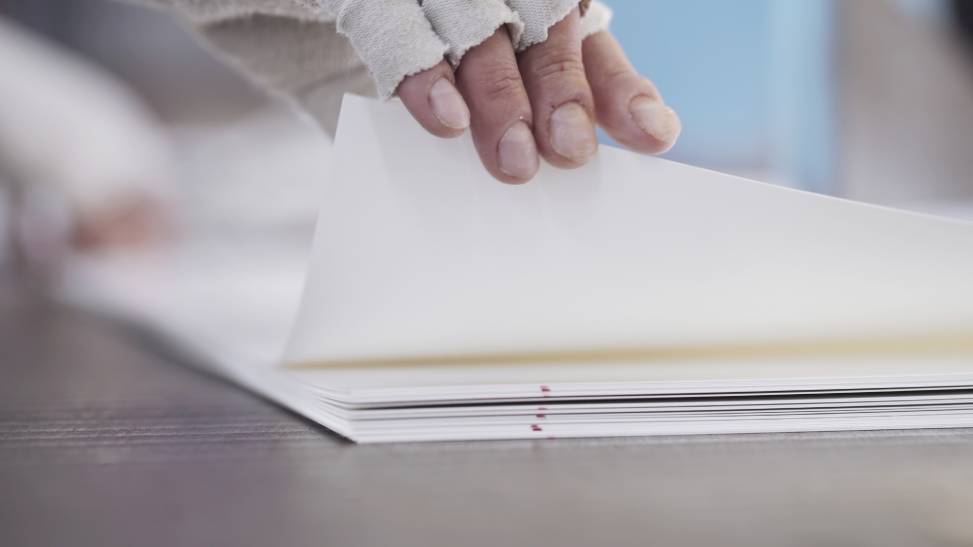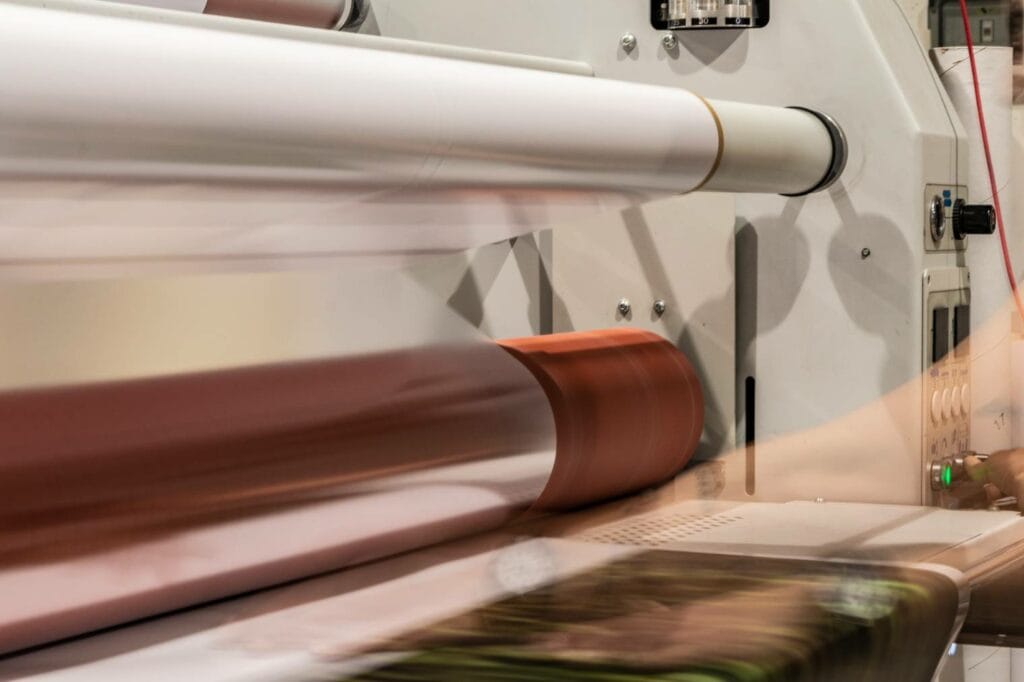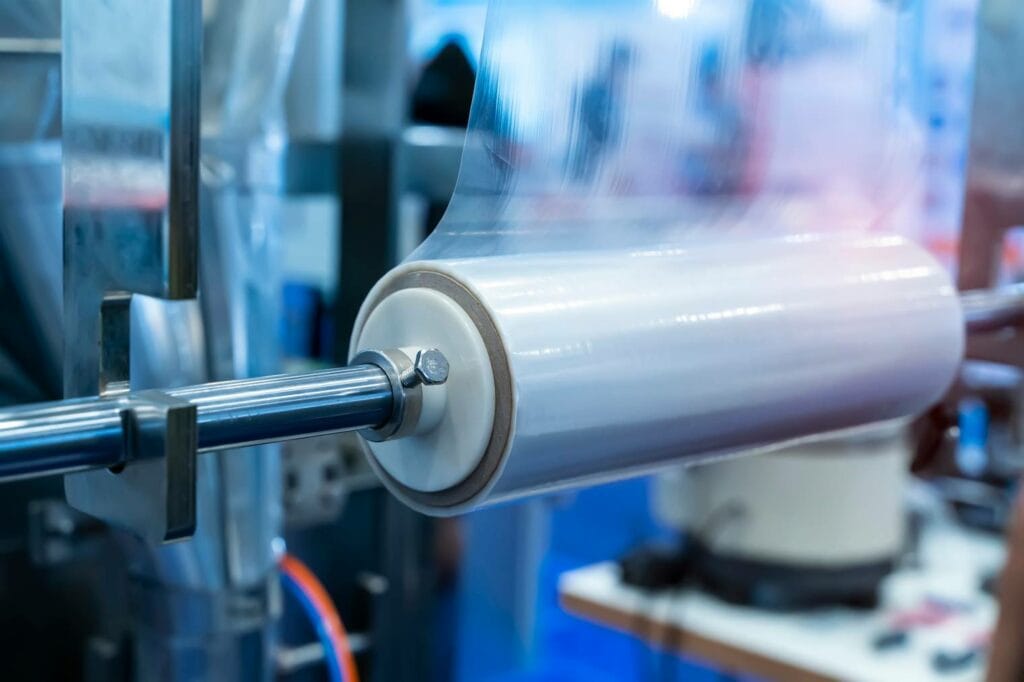Can Laminated Paper Be Recycled? How to Properly Dispose of It
-
Jeff Weishaupt
- Last updated:

Paper is a highly recyclable product. However, not all paper types can be recycled, especially those containing different materials. One such example is lamination paper. It is made of plastic and paper, making it a non-recyclable product.
Of course, you can recycle its paper part, but not the plastic used in the lamination. So, to dispose of laminated paper, you need to separate the two materials from each other. But while doing so, make sure you’re not using any heat removal method, as it will destroy the paper entirely.
Laminated paper can be recycled, but you should know how to do it. If conventional methods can’t work, what are the unconventional ones? This article answers all your questions related to recycling laminated paper. Let’s dive in.
 What Is Laminated Paper?
What Is Laminated Paper?

Laminated paper is a paper that goes through lamination printing to enhance and protect its quality. In lamination printing, a thin layer of plastic is applied over a card sheet or paper to preserve its efficacy for a long time.
Lamination also improves the paper’s durability and makes it strong enough to fight water and other pollutants. The laminated paper looks fancy, but unfortunately, recycling them is very challenging.
Why Is Laminated Paper Difficult to Recycle?
Laminated paper can’t be recycled conventionally due to many factors. Here are some of them in detail:
Plastic Used in Lamination
The primary reason why laminated paper is difficult to recycle is its lamination. As you know, plastic is a non-recyclable product. So even if you use unconventional ways to recycle it, it’s pretty challenging to make new products from it.
Paper, on the other hand, is a highly recyclable product. You can get it recycled at any facility. But when it comes to laminated paper, the lamination protects the paper from all sorts of damage. Unfortunately, that also includes crushing and shredding in recycling facilities.
Paper Needs Water During Recycling

Water is crucial to break down the paper in recycling. However since lamination makes it water-resistant, it becomes nearly impossible for the moisture to reach the paper. This means you must remove the plastic first and then recycle the paper.
However, breaking down the laminating plastic has a high chance of damaging the inside paper. Both of these things make laminated paper a hard-to-recycle product.
Recycling Facilities Accept Products Made of Similar Materials
Recycling facilities typically recycle products made of similar materials. This means those items that don’t have any impurities. But since lamination paper is a combination of paper and plastic, it’s hard to recycle it as a whole. However, both materials can be recycled separately.
Most recycling facilities don’t have resources or structures that separate the plastic from the paper. It’s also a very costly process.
How to Properly Dispose of Laminated Paper
Many recycling facilities refuse to accept laminated papers. So, what should you do in such a case? No, don’t think about tossing them into the bin. Instead, try some unconventional methods. Here are the most effective ones:
1. Pay $96 to TerraCycle

TerraCycle is a recycling company that offers free and paid services for almost every kind of waste. They are fully equipped with tools and processes required to separate paper and plastic and recycle the laminated waste.
For the laminated waste, you’d need to buy a $96 Zero Waste Box for laminated paper packaging, put the paper in it, and send it back to the facility. That’s it. You’ll also have multiple choices in the box size.
2. Contact NoW
NoW stands for no-waste technology. It is a company that manufactures and leverages advanced technology to recycle laminated products easily. NoW targets the water-soluble layer present between the paper and plastic of the laminated paper for easy recycling.
3. Use Celloglas’s Biodegradable Lamination

Celloglas is a recycling company that developed the idea of cellulose lamination. Cellulose is a part of a plant’s cell, which is biodegradable and compostable. This makes Cellgloas’s cellulose lamination better than NoW’s technique, as the latter is non-biodegradable.
Remember, plastic keeps losing its integrity depending on the number of times you recycle it. But still, the recycled plastic goes into the dump yard anyway. So recycling may delay plastic from reaching landfills; it doesn’t actually prevent it.
Celloglas’s cellulose lamination is very similar to ordinary paper. If you recycle the cellulose, it will be converted into compost instead of a landfill.
4. Use AR Metalizing’s Silberboard
AR Metalizing is a company known for its innovative product called Silberboard. It is a metallic alternative to typical plastic lamination and is easily recyclable.
Silberboard works on a “metalized vacuum vaporization” process to ensure sustainability and achieve the aesthetics of product packaging. In this process, a microscopic metallic layer is applied to a standard paper to make it look good and protect it from damage.
5. Craft Dry-Erase Boards
You can be creative and turn your laminated paper into something useful, such as dry-erase boards. You only need a few supplies and tools to create different dry-erase boards.
If you want to use this recycling method, collect magnetic tape, dry paper towels, and a whiteboard marker. Now, attach the tape to the laminated papers and put them on a metallic surface like a refrigerator. The metallic surface will trigger the magnetic effects of the tape.
Ensure that the papers are stuck firmly, and you’re done! You can now ask your kids to have fun writing on the board, erase it with the paper towel, and then write again.
6. Use the Papers as Table Mats

Laminated papers can be a great decor item too. You can place them on your dining table as table mats and arrange plates on them. The papers are wide enough to cover the surface area of plates and offer an exquisite dining experience. You can also use creativity to make your new table mats look more aesthetically pleasing.
7. Reuse the Laminated Papers in DIY Projects
If you have kids at home, laminated paper can provide a non-stop fun activity for them. You can engage them with multiple DIY projects that involve laminated papers and bring out their creativity.
For starters, laminated papers make great coasters, bookmarks, and gift wraps. You can also find lots of ideas on YouTube as well. Just make sure that the material doesn’t go into the trash can!
8. Use Different Alternatives of Laminated Papers

While you can reduce the use of laminated papers, it’s not always easy to do so. If you’re having difficulty letting go of the paper, you can switch to its healthier and easily recyclable alternatives. These include plastic sleeves and sheet protectors.
Although made of plastic, both materials are easily separable at recycling facilities. This way, you’ll be sure you’re not contributing to landfill waste.
Does Laminated Paper Cause Harm to the Environment?
You know that recycling laminated paper is almost impossible without separating its materials. That’s a complicated process itself. When laminated papers don’t get recycled properly, they end up in landfill and cause harm to the environment.
So yes, laminated paper causes harm to the environment. Here are some reasons how it does so:
- It Is Non-Biodegradable: Laminated papers are not only unrecyclable, but they are non-biodegradable too. A non-biodegradable product occupies a significant area of the land, keeps it polluted, and ends up in landfills.
- It Contributes to Deforestation: Paper comes from trees, meaning manufacturing laminated paper contributes to deforestation. When paper is recycled, it helps reduce cutting down trees to manufacture new paper. However, since laminated paper can’t be recycled easily, it ultimately increases deforestation.
- It Causes Higher Carbon Emissions: A high deforestation rate leads to decreased carbon emission absorption. This means high carbon emissions are released into the atmosphere, leading to greenhouse effects. Since laminated paper increases deforestation, it contributes to high carbon emissions. Thus, it’s better to use laminated paper only when you have no other healthier alternative available. You can at least reduce its use if you can’t recycle it!
 Conclusion
Conclusion
Laminated paper is a non-recyclable product, but it can be disposed of in a few non-conventional ways. Most of these methods involve separating plastic from paper and then recycling both materials differently.
Paper is a highly recyclable product, but plastic is not. You may weaken plastic by recycling it multiple times. However, unfortunately, it is non-biodegradable, meaning it will end up in the landfill one way or another.
Thus, it’s better to avoid using laminated paper if you care about creating a sustainable environment. It will also help free up landfill space and reduce deforestation and carbon gas emissions.
Featured Image Credit: SpockyPo, Shutterstock
Contents
 What Is Laminated Paper?
What Is Laminated Paper?